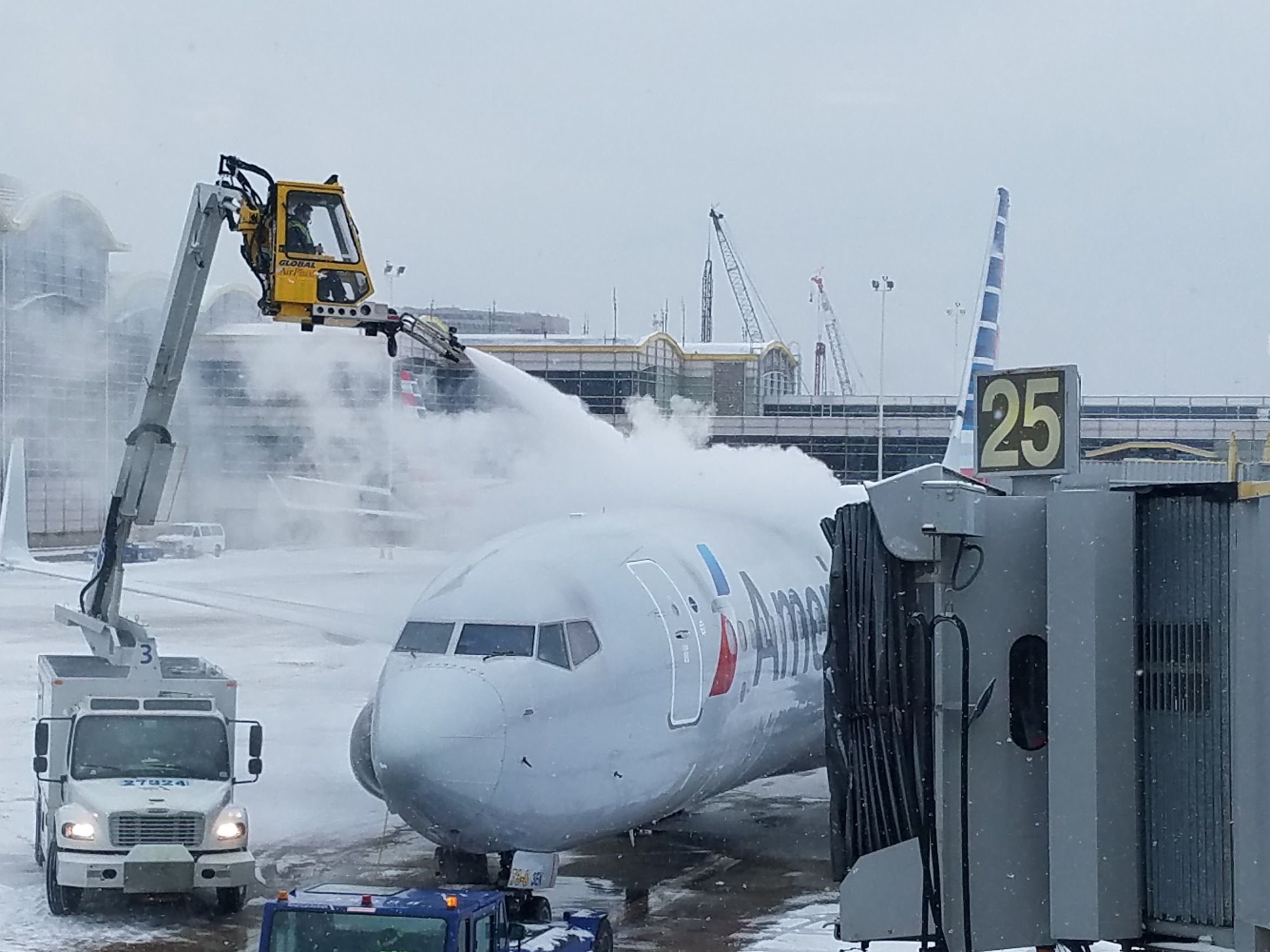Planes are generally as safe an indoor environment with other people as there can be, thanks to frequent exchange of cabin air with outside air, HEPA filters that catch most virus, and flow of the air from ceiling to floor rather than vice versa.
That layers on top of frequent cleaning (depending on the airline) and disinfecting sprays that continue to kill virus on surfaces, as well as mask requirements for passengers that may limit emission of virus by a customer who is sick.
Time on the ground may not be as safe from spread, but Delta has improved the filters in jetways while airlines generally have tried to reduce crowding during the boarding and deplaning process. Extra cleaning extends into the terminals. United nn Wednesday announced electrostatic spraying at 35 airports. (Security checkpoints may not be handling things as well.)
One challenge to all of this is de-icing of aircraft in winter. Scott McCartney writes in the Wall Street Journal that:
- Boeing had previously said airflow was optional during de-icing, while Airbus didn’t make a recommendation.
- Now Airbus recommends airflow set to high, while Boeing recommends it be switched ‘on’.
Boeing issued a memorandum to airlines recommending that air recirculation remain switched on during deicing. Boeing had previously told airlines that recirculation was optional.
The company says the volume of cabin air is exchanged every three to six minutes during deicing on its planes instead of the standard exchange rate of every two to three minutes. That’s still significantly faster than most hospitals and airports, Boeing says. The company says it’s continuing to discuss cabin airflow and deicing with airlines.

De-icing involves spraying chemicals in order to remove frost from surfaces and keep them clear during takeoff. This is primarily an issue during the coldest temperatures,”United says 12.5% of all its January departures required deicing.” Having hubs in Chicago, Denver, and Newark contribute to this. Airlines will need to figure out how much airflow they can maintain while applying de-icing fluid to aircraft with passengers on board.
United in particular runs an aircraft’s auxiliary power unit while on the ground during boarding and deplaning in order to take advantage of airflow exchange and filtration, providing aircraft protections throughout the time passengers are on board. It’s an expense I wish all airlines took on.


Funny, when I’m on an aircraft being deiced they’ve always turned off the air because otherwise the unpleasant smell of the deicing chemicals gets into the cabin.
@Bill
That’s the whole issue, while deicing the SOP for most planes are to turn off the Packs (AC) and Eng and APU bleeds valves to prevent deice fumes from getting sucked in the cabin, basically you are sitting in a recirculated volume of air for anywhere from 10-20 minutes, now add the potential of someone having COVID in that cabin, hence the concern.
The pilot could make a PA to passengers to hold their breath for 10-20 minutes while de-icing is in progress.